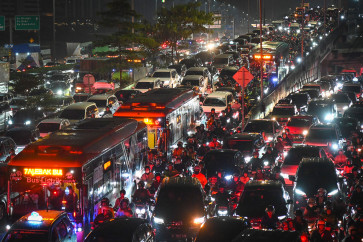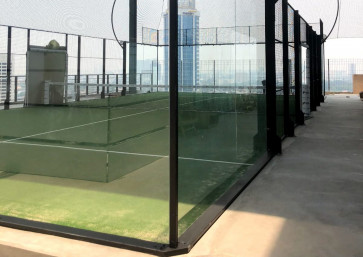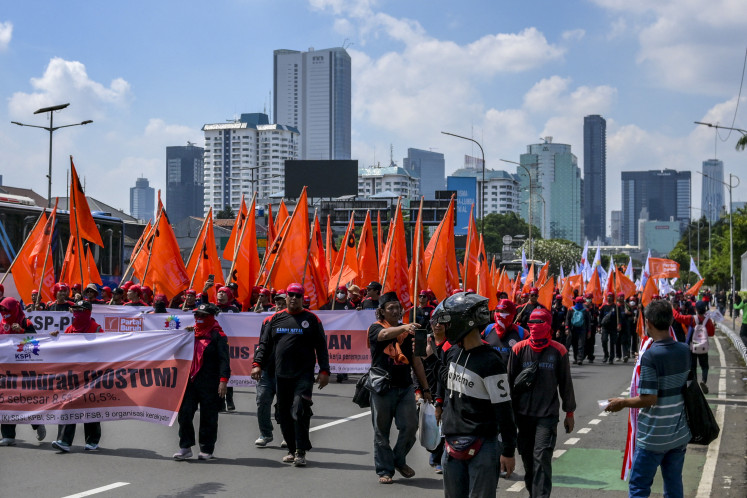Popular Reads
Top Results
Can't find what you're looking for?
View all search resultsPopular Reads
Top Results
Can't find what you're looking for?
View all search resultsEditorial: Here comes the sea toll road
Last week, the government launched its so-called sea toll road transportation program, which connects Jakartaâs seaport of Tanjung Priok and Surabayaâs Tanjung Perak in East Java with major ports in Maluku and Papua, in the eastern part of the country, and in Riau Islands
Change text size
Gift Premium Articles
to Anyone
L
ast week, the government launched its so-called sea toll road transportation program, which connects Jakarta's seaport of Tanjung Priok and Surabaya's Tanjung Perak in East Java with major ports in Maluku and Papua, in the eastern part of the country, and in Riau Islands.
Not many newspapers paid much attention to the launching of the maritime freight service by the ministers of trade and transportation at Tanjung Priok. But the program is actually vital for a vast archipelagic country such as Indonesia, where seaports are key to facilitating the smooth distribution of goods.
President Joko 'Jokowi' Widodo has rightly put inter-island connectivity at the top of his development priorities under the sea toll road program. As part of this program, the government also has put a great deal of resources into improving the performance of seaports to cut down dwelling times for cargo vessels.
The acute lack of regular inter-island freighter services and inefficient port handling are one of the main causes of the high logistics costs in the country.
The freight service program launched last Wednesday initially runs only three freighters plying three routes between the two largest ports in Java and a dozen ports in Papua, Maluku and Riau Islands. But the transportation minister has instructed state-owned shipping company Pelni to order six more inter-island freighters to increase the frequency of services between those ports.
The government has also made the right decision to initially subsidize the freight rates charged by Pelni on the routes covered under the program, so that the service will be able to run regularly even though the load factor will initially be very low.
The subsidized freighter service facilitates the realization of the 'trade follows the ship' principle. This means that after a few months, the regular freighter service will eventually attract the attention of shippers, traders and manufacturers and encourage them to use the services. And as the load factor increases, Pelni will no longer need subsidies for that service.
The experiences of many other countries have shown that implementing the 'trade follows the ship' concept is a much more effective and efficient way to invigorate sea transportation services than waiting first for the availability of sufficient volumes of cargo on particular routes before ships ply those routes under the so-called 'ship follows the trade' concept.
Efficient maritime transportation is indeed a prerequisite to developing efficient supply chains within the vast archipelago, and another vital component of this service is efficient seaports, because smooth sea transportation will contribute to strengthening the overall competitiveness of the economy.
Superb seaport performance will unleash the country's vast economic potential, because shipping lines and business in general will benefit from improved logistics and the reduced costs of supply chains. Improving supply chain flows with a focus on developing domestic port infrastructure and capacity is therefore imperative.










